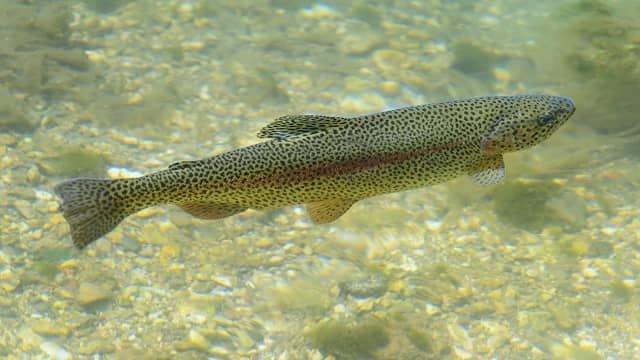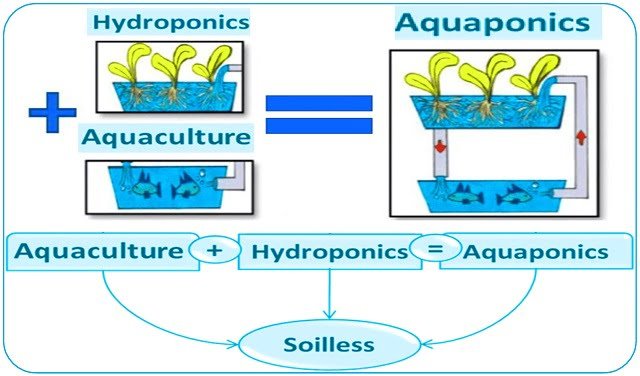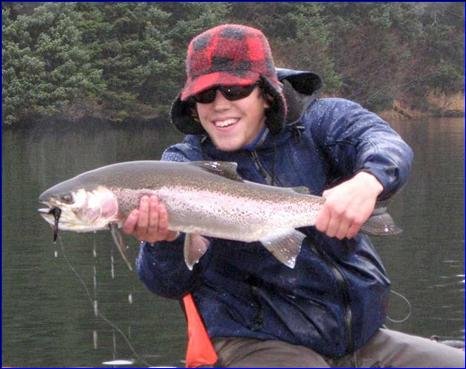
Dietary choices play a pivotal role in the development and well-being of aquatic organisms, especially in aquaculture environments. Additionally, food accounts for approximately 50 to 70% of production costs in intensive aquaculture, making diet composition a significant factor in economic efficiency.
Carbohydrates are one of the most cost-effective energy sources and are widely used in aquaculture feeds to reduce costs. However, carnivorous fish, such as rainbow trout, utilize carbohydrates sparingly.
In a study aimed at exploring the intricate relationship between dietary carbohydrate levels and the growth, health, and antioxidant capacity of rainbow trout (Oncorhynchus mykiss) in cage culture conditions in freshwater, fascinating insights have emerged. This research offers valuable information for both the trout farming industry and environmental conservation efforts.
Carbohydrate Levels
Many studies have reported that appropriate carbohydrate levels in the diet improve fish growth, antioxidant capacity, and resistance to pathogens while reducing protein and lipid catabolism. However, excessive carbohydrate levels in the diet can lead to metabolic disorders, poor growth performance, low nutrient utilization, and the suppression of the immune response. Carbohydrate requirements vary for different fish species.
The Study
The study focused on rainbow trout, an iconic and commercially significant fish species, with an initial weight of 25.70 ± 0.24 g. These fish were subjected to different dietary regimes, encompassing five diets, all of which were isonitrogenous (containing 420 g/kg protein) and isolipidic (with 150 g/kg lipid) but varying in carbohydrate content.
The five dietary carbohydrate levels were set at 50.6, 102.1, 151.3, 200.9, and 251.8 g/kg, respectively.
Impact on Growth and Performance
The findings of the study underscored the profound influence of dietary carbohydrate levels on rainbow trout. Fish fed diets with carbohydrate levels ranging from 50.6 to 200.9 g/kg displayed significantly higher growth performance, enhanced feed utilization, and increased feed intake when compared to those fed the highest carbohydrate content of 251.8 g/kg.
Through the analysis of the quadratic regression equation for weight gain rate, the study estimated that the ideal dietary carbohydrate requirement for O. mykiss is approximately 126.2 g/kg. This finding is of paramount importance for fish farmers seeking to maximize the efficiency of their aquaculture practices while minimizing costs.
Stay Always Informed
Join our communities to instantly receive the most important news, reports, and analysis from the aquaculture industry.
Metabolic and Health Implications
Beyond growth performance, the study delved into the metabolic and health implications of varying carbohydrate levels in the diet. A high carbohydrate content of 251.8 g/kg was found to activate the Nrf2-ARE signaling pathway in rainbow trout. This activation was associated with a suppression of superoxide dismutase activity and total antioxidant capacity, leading to increased levels of MDA (malondialdehyde) in the liver, indicative of oxidative stress.
Furthermore, rainbow trout fed the high carbohydrate diet exhibited signs of hepatic sinus congestion and dilatation, suggesting liver injury. The dietary regimen also influenced the fish’s immune responses, with elevated mRNA transcription levels of proinflammatory cytokines and reduced levels of lysozyme and complement 3, both essential components of innate immunity.
Conclusion
In conclusion, the study provides a comprehensive understanding of how dietary carbohydrate levels affect the growth, antioxidant capacity, and immune responses of rainbow trout.
“Our study concluded that a carbohydrate level of 251.8 g/kg suppressed growth performance, antioxidant capacity, and innate immunity in O. mykiss. Additionally, a carbohydrate level of 251.8 g/kg caused liver damage and the appearance of an inflammatory response. O. mykiss does not efficiently utilize a diet containing more than 200.9 g/kg of carbohydrates in cage culture with flowing freshwater,” conclude the researchers.
The research suggests that a dietary carbohydrate level exceeding 200.9 g/kg is not efficiently utilized by rainbow trout under cage culture conditions in flowing freshwater. Furthermore, based on the analysis of the quadratic regression equation for WGR, the researchers estimated the appropriate dietary carbohydrate requirement for O. mykiss to be 126.2 g/kg.
For trout farmers, this information is invaluable for fine-tuning feeding strategies to maximize the growth and health of rainbow trout, ultimately contributing to the sustainability and productivity of this important aquaculture species.
The study was funded by the Project of Science and Technology of Qinghai Province, Project of National Natural Science Foundation of China, Project of Science and Technology of Guangdong Province, and Guangdong Provincial Special Fund for Modern Agriculture Industry Technology Innovation Teams.
Contact
Jin Niu
State Key Laboratory of Biocontrol
Guangdong Provincial Key Laboratory for Aquatic Economic Animals and Southern Marine Science and Engineering Guangdong Laboratory (Zhuhai)
School of Life Sciences, Sun Yat-Sen University,
Guangzhou 510275, Guangdong Province, China
Email: gzniujin2003@163.com
Reference (open access)
Zhao, W., Wei, H. L., Wang, Z. Q., He, X. S., & Niu, J. (2022). Effects of Dietary Carbohydrate Levels on Growth Performance, Body Composition, Antioxidant Capacity, Immunity, and Liver Morphology in Oncorhynchus mykiss under Cage Culture with Flowing Freshwater. Aquaculture Nutrition, 2022.
Editor at the digital magazine AquaHoy. He holds a degree in Aquaculture Biology from the National University of Santa (UNS) and a Master’s degree in Science and Innovation Management from the Polytechnic University of Valencia, with postgraduate diplomas in Business Innovation and Innovation Management. He possesses extensive experience in the aquaculture and fisheries sector, having led the Fisheries Innovation Unit of the National Program for Innovation in Fisheries and Aquaculture (PNIPA). He has served as a senior consultant in technology watch, an innovation project formulator and advisor, and a lecturer at UNS. He is a member of the Peruvian College of Biologists and was recognized by the World Aquaculture Society (WAS) in 2016 for his contribution to aquaculture.




